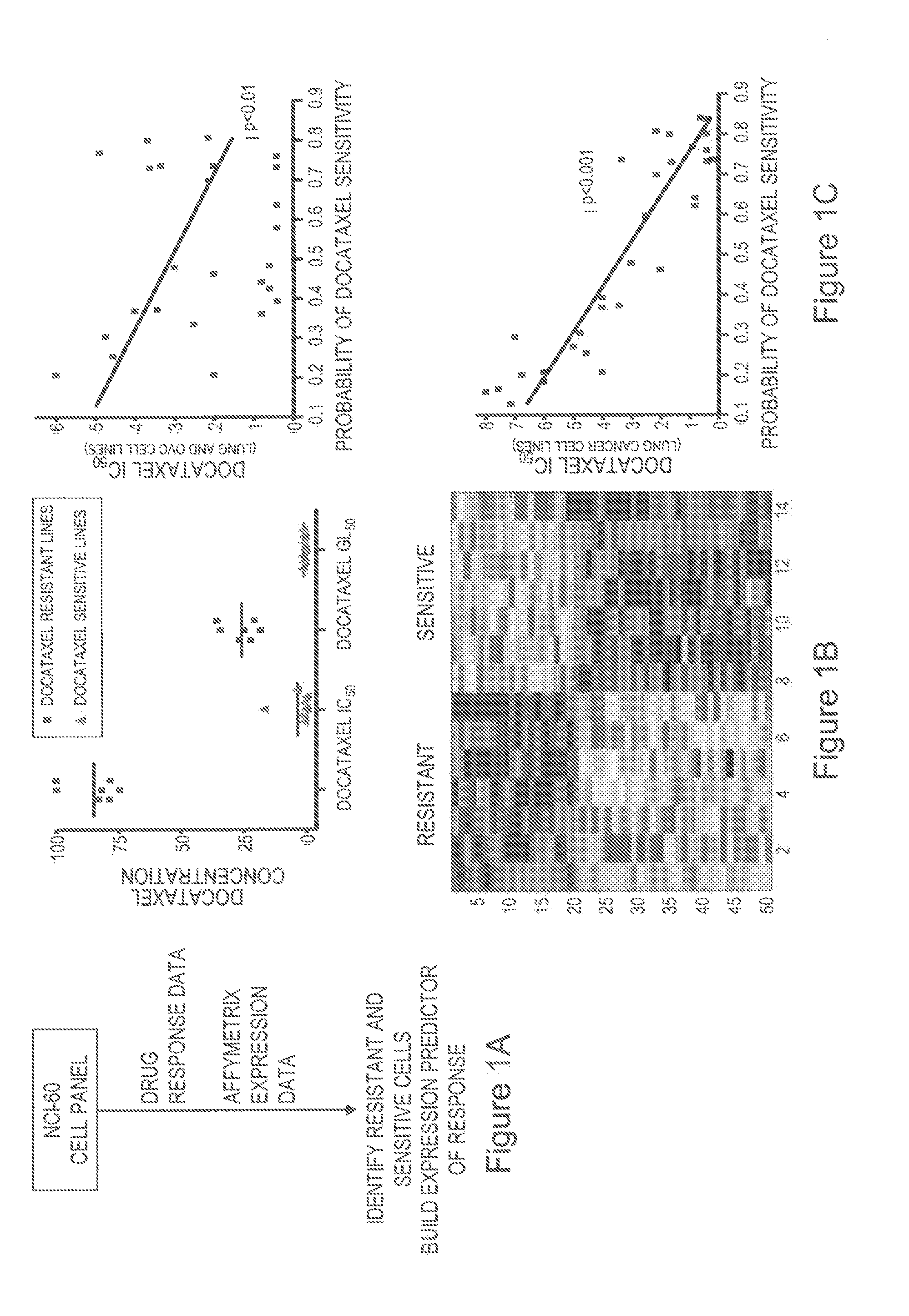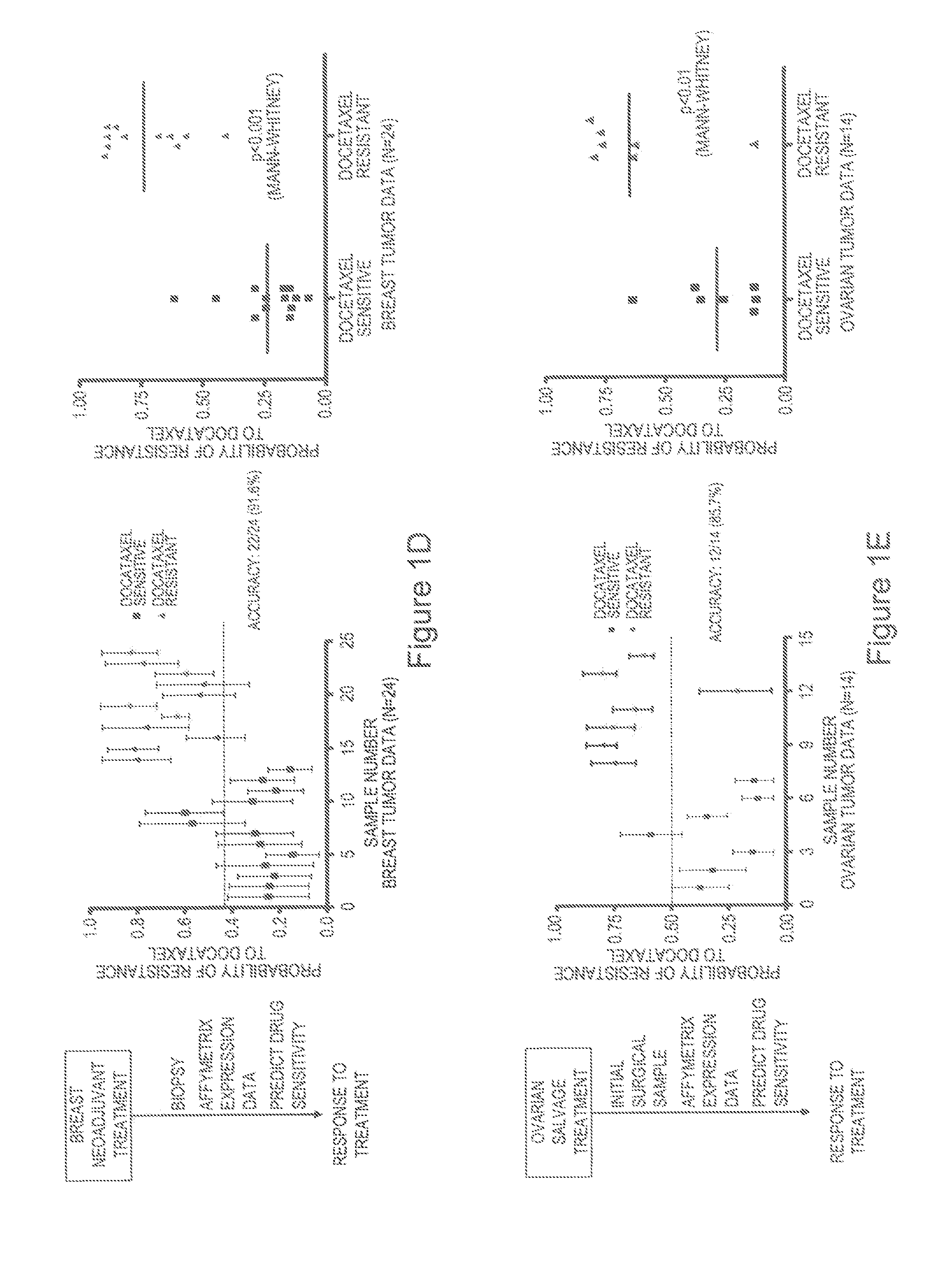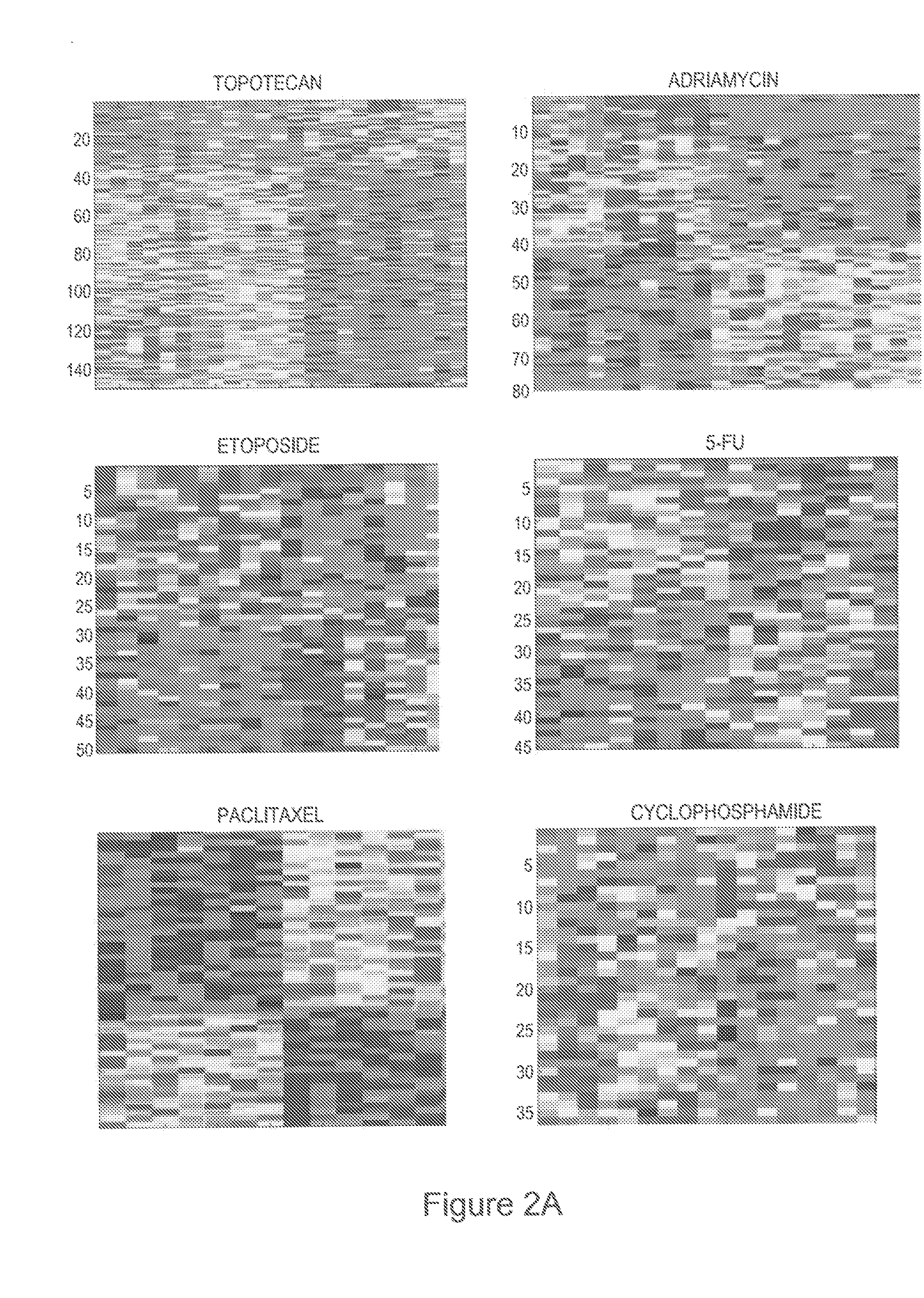Predicting responsiveness to cancer therapeutics
a cancer and responsive technology, applied in the field of predicting the responsiveness of cancer therapeutics, can solve the problems of inability to predict the response of specific therapies, lack of efficacy, and many patients experiencing significant toxicities, and achieve the effect of increasing the probability of clinical respons
- Summary
- Abstract
- Description
- Claims
- Application Information
AI Technical Summary
Problems solved by technology
Method used
Image
Examples
example 1
A Gene Expression Based Predictor of Sensitivity to Docetaxel
[0123]The NCI-60 panel49 was used to develop predictors of chemotherapeutic drug response, and cell lines that were most resistant or sensitive to docetaxel were identified (FIG. 1A, B). Genes whose expression most highly correlated with drug sensitivity, using Bayesian binary regression analysis, were selected to develop a model that differentiates a pattern of docetaxel sensitivity from resistance. A gene expression signature consisting of 50 genes was identified that classified on the basis of docetaxel sensitivity (FIG. 1 B, bottom panel).
[0124]In addition to leave-one-out cross validation, we utilized an independent dataset derived from docetaxel sensitivity assays in a series of 30 lung and ovarian cancer cell lines for further validation. As shown in FIG. 1C (top panel), the correlation between the predicted probability of sensitivity to docetaxel (in both lung and ovarian cell lines) and the respective IC50 for doc...
example 2
Utilization of the Expression Signature to Predict Docetaxel Response in Patients
[0125]The development of a gene expression signature capable of predicting in vitro docetaxel sensitivity provides a tool that might be useful in predicting response to the drug in patients. We made use of published studies with clinical and genomic data that linked gene expression data with clinical response to docetaxel in a breast cancer neoadjuvant study50 (FIG. 1D) to test the capacity of the in vitro docetaxel sensitivity predictor to accurately identify those patients that responded to docetaxel. Using a 0.45 predicted probability of response as the cut-off for predicting positive response, as determined by ROC curve analysis (FIG. 7A), the in vitro generated profile correctly predicted docetaxel response in 22 out of 24 patient samples, achieving an overall accuracy of 91.6% (FIG. 1D). Applying a Mann-Whitney U test for statistical significance demonstrates the capacity of the predictor to disti...
example 3
Development of a Panel of Gene Expression Signatures that Predict Sensitivity to Chemotherapeutic Drugs
[0127]Given the development of a docetaxel response predictor, we examined the NCI-60 data set for other opportunities to develop predictors of chemotherapy response. Shown in FIG. 2A are a series of expression profiles developed from the NCI-60 dataset that predict response to topotecan, adriamycin, etoposide, 5-fluorouracil (5-FU), taxol (paclitaxel), and cyclophosphamide (cytotoxan). In each case, the leave-one-out cross validation analyses demonstrate a capacity of these profiles to accurately predict the samples utilized in the development of the predictor (FIG. 8B). Each profile was then further validated using in vitro response data from independent datasets; in each case, the profile developed from the NCI-60 data was capable of accurately (>85%) predicting response in the separate dataset of approximately 30 cancer cell lines for which the dose response information and rel...
PUM
| Property | Measurement | Unit |
|---|---|---|
| temperature | aaaaa | aaaaa |
| time | aaaaa | aaaaa |
| chemotherapy responsivity | aaaaa | aaaaa |
Abstract
Description
Claims
Application Information
 Login to View More
Login to View More - R&D
- Intellectual Property
- Life Sciences
- Materials
- Tech Scout
- Unparalleled Data Quality
- Higher Quality Content
- 60% Fewer Hallucinations
Browse by: Latest US Patents, China's latest patents, Technical Efficacy Thesaurus, Application Domain, Technology Topic, Popular Technical Reports.
© 2025 PatSnap. All rights reserved.Legal|Privacy policy|Modern Slavery Act Transparency Statement|Sitemap|About US| Contact US: help@patsnap.com



